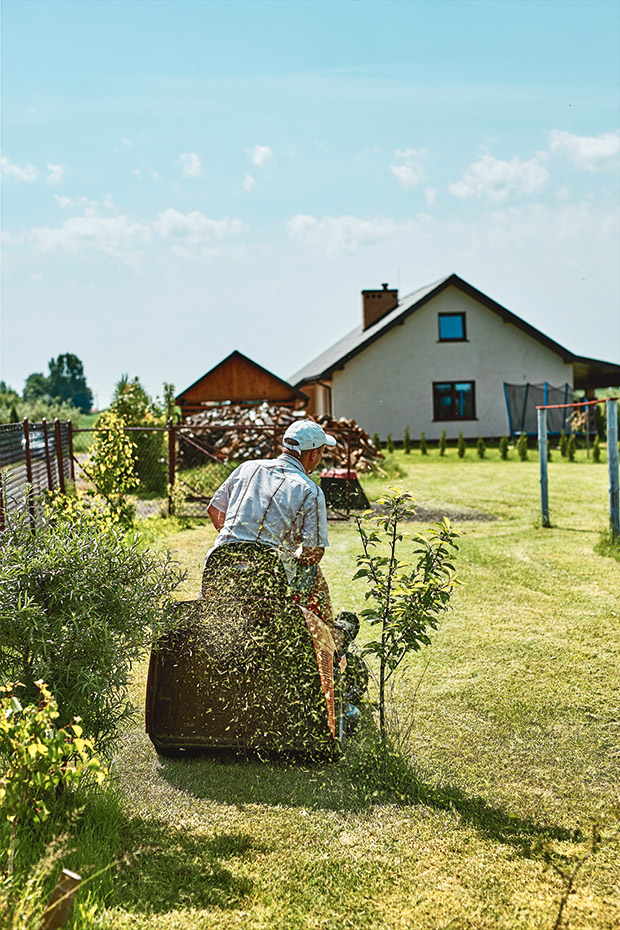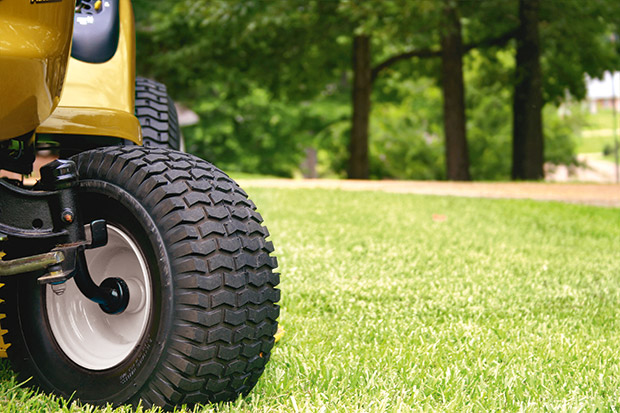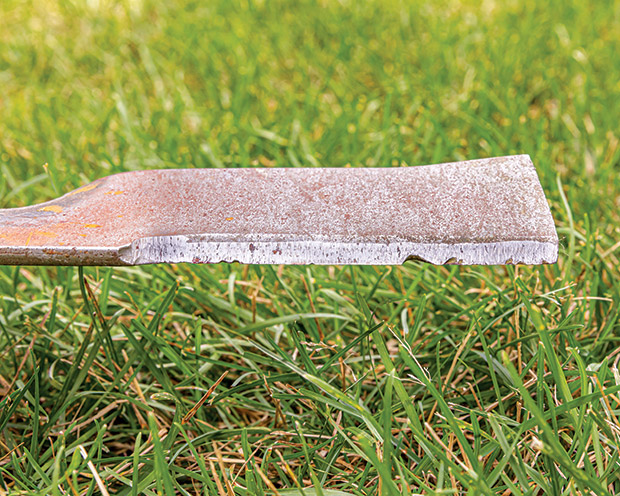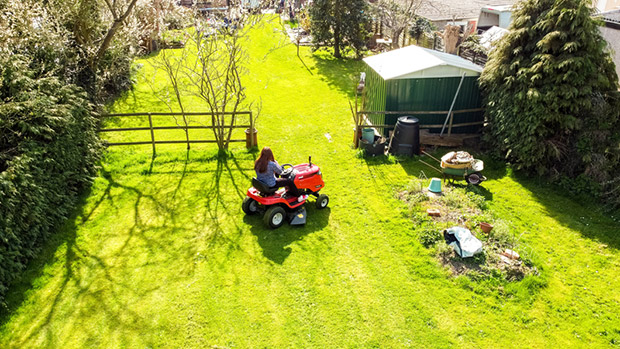
Ride-on mowers are easy to use, but they’re also sophisticated pieces of machinery.
Words: Nadene Hall
Here are four common issues something has (or is about to) go wrong.
1. MOWER WON’T START
Common causes:
■ no fuel;
■ safety feature engaged;
■ flat, faulty, or dead battery;
■ blown fuse;
■ bad spark plug;
■ blocked carburetor, fuel line, or fuel filter;
■ failing/failed alternator ;
■ failed starter solenoid or starter motor.
Modern ride-on mowers have a range of safety switches that mean the engine won’t start if they’re engaged. Examples include if the deck blades are set to spin, the machine is in ‘drive’, or there’s no-one sitting on the operator’s seat (this prevents it from being turned on while the operator is standing beside the mower).
Always check the battery connectors are tightly fixed to the terminals – if they’ve worked loose or have come off, the engine can’t get enough spark to start.
If you hear a click when you turn the key, but the engine won’t turn over, use a multimeter to check:
■ the battery for a charge – modern digital battery chargers can tell you if a battery needs replacing when you hook it up.
■ the starter solenoid, starter motor, fuses, and wiring from the battery to the starter solenoid.
If it’s none of these, other possibilities are a blocked carburetor, fuel line, or fuel filter, or worst of all, a seized engine.

2. ENGINE IS OVERHEATING
Common causes:
■ low engine oil level;
■ radiator water level too low;
■ blocked air filter;
■ blocked inlet screens;
■ blocked mower deck;
■ mowing wet and/or long grass.
When you buy a ride-on mower, its manual will include a maintenance schedule. Check the oil level every time you use your mower.
Cut grass will build up within the engine housing over time. A ride-on mower needs to suck in large amounts of air. Tiny grass fragments and/or dust can quickly block up inlet screens and air filters.
If you mow wet grass, especially if it’s long, you’re placing the engine under a lot of stress. It can also quickly block up the blades and belts on the mower deck, adding more strain. It’s best to mow grass when it’s dry, especially if it’s very long. It’s often better to mow a lawn down to your preferred height in stages rather than all at once.
3. TERRIBLE FINISH
Common causes:
■ dull blades;
■ damaged blades;
■ deck not level;
■ grass too long/wet;
■ worn deck belts/engine speed too low.
Dull blades tear grass instead of slicing it, leaving the finish looking uneven and shaggy. They may even pull up chunks of grass and soil. If you need to mow over parts of the lawn several times to get it even, it’s most likely the blades need sharpening or replacing.
If you’re using your ride-on mower every 1-2 weeks, blades will need sharpening at least a couple of times a year.
You’ll need to replace blades if they:
■ develop chips or dents;
■ get bent or warped;
■ are corroded;
■ have a thin trailing edge (opposite the cutting edge);
■ have already been sharpened 2-3 times and/or are older than 2 years.

Over time, a deck can go off-level. You can check by parking on a level surface and measuring the height of the deck on either side. Decks have bolts on either side that allow you to adjust it back to level.
Other causes of an uneven cut:
■ mowing grass that’s too long and/or wet – it’s best to mow grass when it’s dry. If it’s long, mow it in stages.
■ deck speed too low – this may be due to a worn belt or low engine speed. Blades need to spin fast and freely, so increase the engine speed and raise the deck if grass is clogging under it.
Tips:
■ Stop the mower, remove the key, and check the deck, belts, and blades if you hit a divot, sticks, or rocks. A blade that’s bent can cause damage to the deck and destroy bearings, which are a more expensive fix.
■ You can use a hand file or an angle grinder to sharpen blades – if you’re not confident, take them to a ride-on mower agent.
■ Always have a spare blade or blades on hand – depending on the model, it may take a while to find the right one. It also gives you a comparison, making it easier to see the damage/wear on the old one.
■ Unless you’re experienced, it’s best to take mulching blades to a professional for sharpening.
4. DECK VIBRATIONS
Common causes:
■ damaged blades
■ damaged blade spindle bearing
■ worn/broken/twisted deck belts
■ loose deck bolts
■ damaged deck pulleys
■ deck not adjusted properly
■ engine running at low RPM
Any kind of vibration in the deck is a sign something is badly wrong, and you need to stop immediately. If you hit anything solid with the mower deck, such as stones, roots, or the ground, it’s vital to stop and check the deck whether there’s vibration or not.
Check the blades. A damaged or bent blade can vibrate, causing serious damage to bearings holding the blades under the deck. If these fail, they can then damage other deck components. With the engine off and key removed, check the blades can’t move up and down, and check for noise in the bearings as you manually turn the blades – there shouldn’t be any noise. Also, check that the bolts holding the blades in place are tight.
If the deck has belts, these can become stretched, twisted, or worn, damaging deck components.
Deck bolts may loosen over time and cause damage to other components if you keep using the machine.

Tips:
1. Check the deck belts every time you mow for signs of wear. Remove deck covers and clear out grass, dirt, and other debris.
2. Follow the maintenance instructions in your mower’s manual, which will include greasing pivot points and bearings.
3. A good digital multimeter is invaluable for diagnosing electrical faults in any vehicle or machine. It measures voltage, current, and resistance in a circuit. This can quickly help you to narrow down an issue to something simple, eg a blown fuse, a failing battery, and rule other electrical faults in or out.
Love this story? Subscribe now!
The post 4 common things that can go wrong with your ride-on mower appeared first on thisNZlife.
